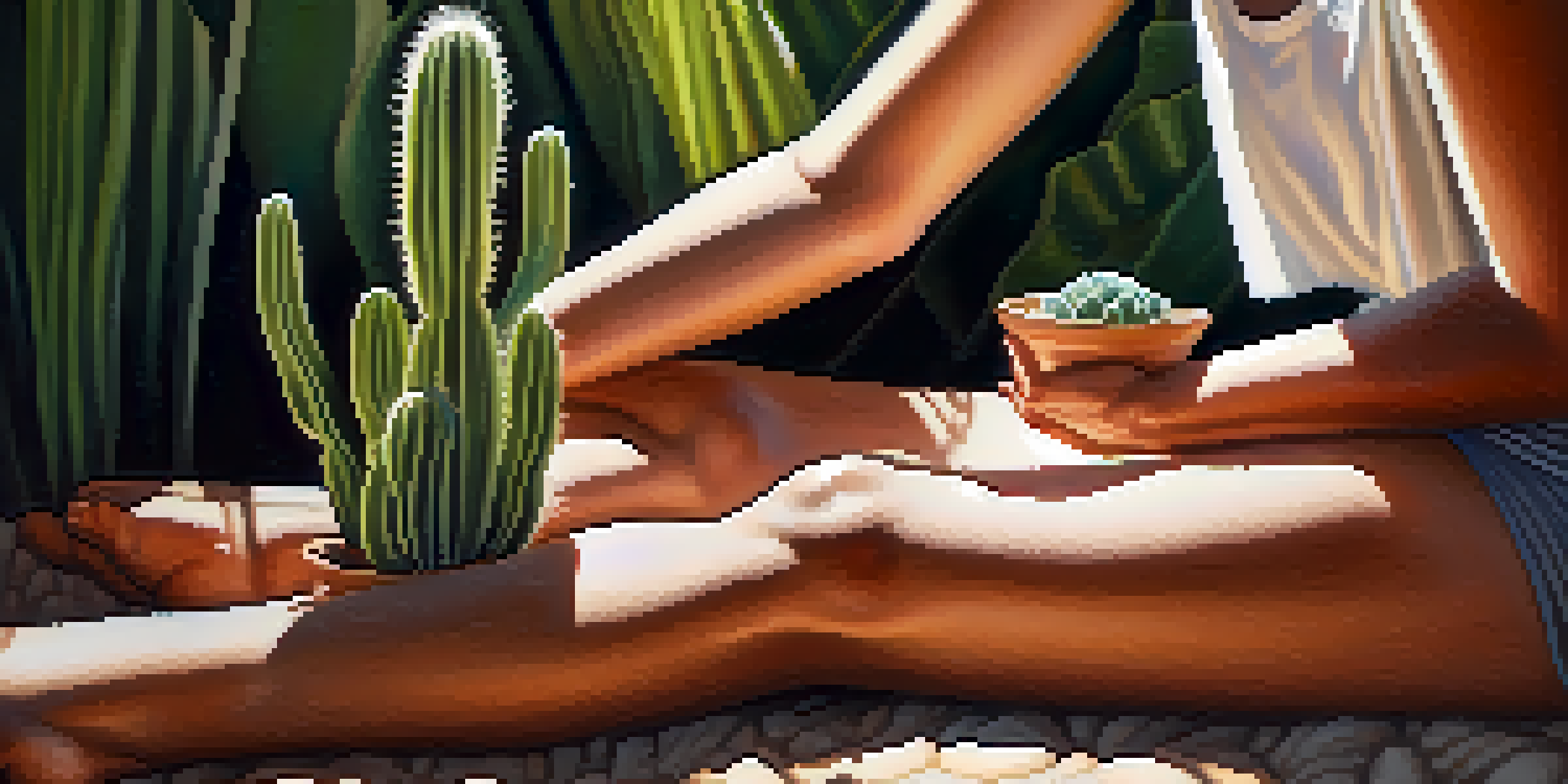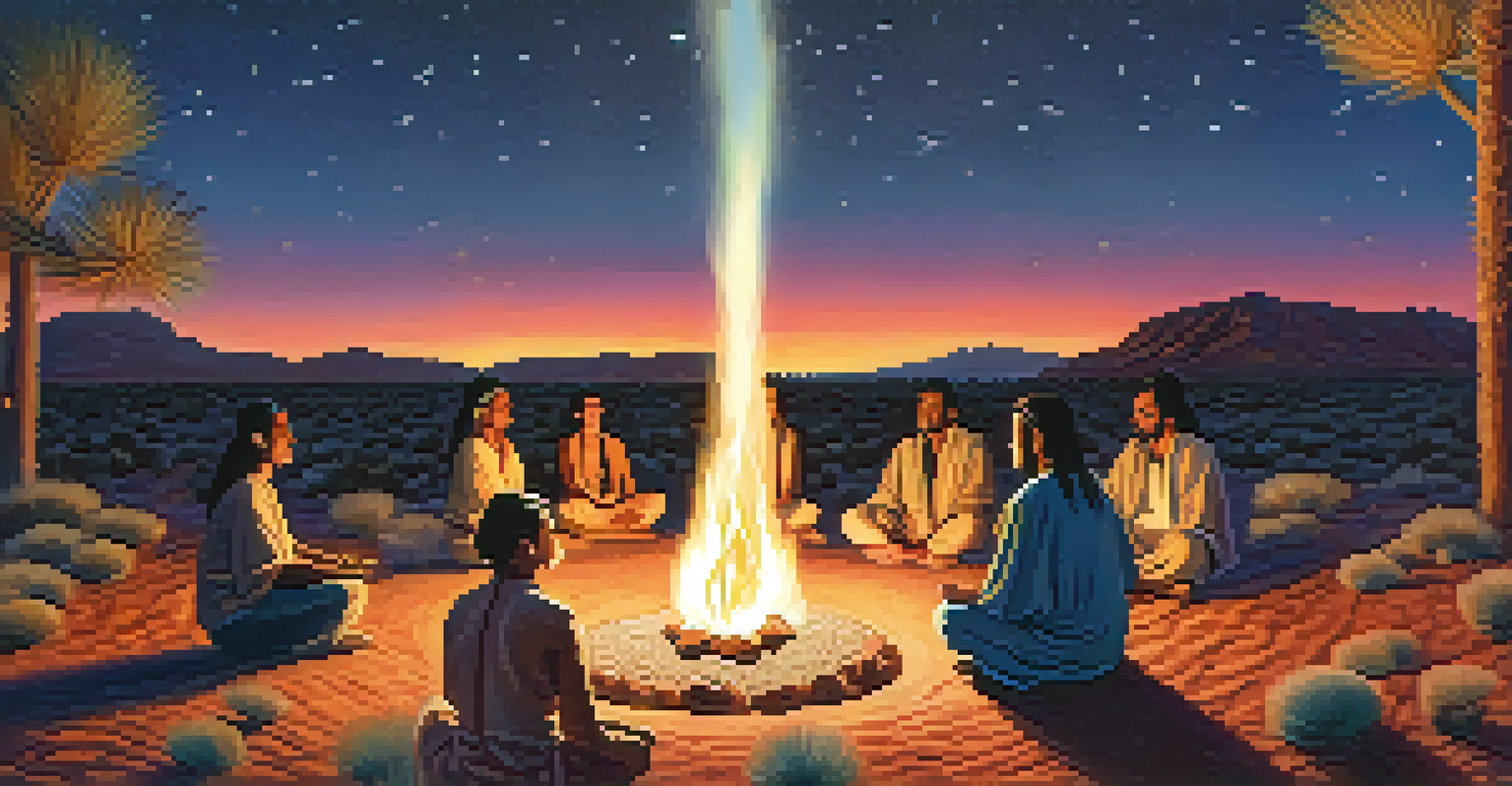Benefits of Integrating Meditation in Peyote Ceremonies

Understanding Peyote and Its Cultural Significance
Peyote is a small, spineless cactus known for its psychoactive properties, primarily due to the compound mescaline. Traditionally used by Indigenous peoples in North America, it serves as a religious sacrament, facilitating deep spiritual experiences. The rituals surrounding peyote consumption are rich in history and cultural significance, allowing participants to connect with their heritage.
The mind is everything. What you think you become.
In these ceremonies, participants often seek visions, healing, and a deeper understanding of themselves and the universe. The experience can be profound, yet it can also be overwhelming without proper preparation. This is where integrating meditation can play a crucial role.
By incorporating meditation into peyote ceremonies, participants can create a more focused and intentional space for their experiences. This blend not only respects the cultural roots of the practice but also enhances the overall journey of self-discovery.
Enhancing Inner Peace Through Meditation
Meditation is widely recognized for its ability to foster inner peace and clarity. When practiced before or during a peyote ceremony, it can help calm the mind, allowing individuals to approach the experience with a grounded mindset. This is particularly beneficial, given the potentially intense emotional and spiritual journeys that peyote can induce.

By centering oneself through meditation, participants may find it easier to navigate the highs and lows of their psychedelic experience. This serenity can lead to a more meaningful engagement with the visions and insights that peyote offers. Ultimately, a tranquil mind can enhance the ability to absorb and reflect on the messages received during the ceremony.
Meditation Enhances Peyote Journeys
Integrating meditation into peyote ceremonies creates a focused environment that supports deeper self-discovery and spiritual insights.
Moreover, cultivating inner peace through meditation can also help participants release any anxiety or fear they might carry. This openness can transform the experience, allowing for deeper connections with oneself and the spiritual realm.
Facilitating Emotional Healing via Meditation
Emotional healing is a significant focus in many peyote ceremonies, often helping participants confront past traumas. Integrating meditation can provide a safe space to process these emotions, fostering a greater sense of resilience. When individuals meditate, they can identify and acknowledge their feelings without judgment.
In the middle of difficulty lies opportunity.
This practice allows for a more profound exploration of emotions that may surface during the peyote experience. By being present with their feelings, participants can work through emotional blocks, leading to transformative healing. The calming nature of meditation supports this process, creating a buffer against overwhelming emotional responses.
Additionally, meditation encourages self-compassion, which is essential for healing. When individuals approach their emotions with kindness and curiosity, they are more likely to experience breakthroughs and deeper understanding.
Deepening Spiritual Connection through Mindfulness
Mindfulness is a key component of meditation, promoting awareness of the present moment. In the context of peyote ceremonies, mindfulness can help participants stay engaged with their experiences as they unfold. This heightened awareness allows for a richer exploration of spiritual insights and connections with the divine.
When individuals practice mindfulness during peyote ceremonies, they are better equipped to recognize and embrace the messages that arise. This active engagement can lead to powerful revelations and a lasting sense of connection to the spiritual world. Participants may find themselves more attuned to the energies around them, fostering a deeper bond with nature and the universe.
Community Bonding Through Shared Practices
Participating in meditation together fosters a sense of unity among participants, enriching the collective experience of the peyote ceremony.
Furthermore, mindfulness encourages gratitude, which can amplify the spiritual experience. By appreciating each moment, participants can cultivate a sense of wonder and reverence for the journey they are on.
Promoting Community Bonding in Ceremonies
Peyote ceremonies often involve groups, creating a unique opportunity for community bonding. Integrating meditation practices can deepen these connections, as shared moments of mindfulness foster a sense of unity. When participants meditate together, they create a collective energy that enhances the overall atmosphere of the ceremony.
This communal aspect can help individuals feel more supported during their spiritual journeys. As they navigate their experiences, knowing others are present and engaged can be incredibly comforting. Meditation serves as a bridge, connecting participants not only to their inner selves but also to one another.
Moreover, shared meditation can prompt meaningful discussions and reflections following the ceremony. These conversations can solidify the bonds formed during the experience, enriching the community and encouraging ongoing support among participants.
Encouraging Personal Growth and Self-Discovery
One of the most profound benefits of integrating meditation in peyote ceremonies is the potential for personal growth. Meditation encourages self-reflection, allowing participants to explore their beliefs, values, and aspirations. This introspective practice can lead to significant insights and clarity about one's life path.
As individuals immerse themselves in the peyote experience, the clarity gained through meditation can guide their understanding of the visions encountered. This synergy between meditation and peyote can catalyze transformative changes, empowering individuals to take actionable steps toward their goals. It encourages a mindset of exploration and curiosity, crucial for personal development.
Personal Growth via Self-Reflection
Meditation encourages introspection, enabling individuals to explore their beliefs and aspirations, which can lead to transformative personal growth.
Additionally, the integration of meditation can help participants develop a stronger sense of identity. By understanding their thoughts and feelings more clearly, they can embrace who they are and who they wish to become, fostering a journey of self-empowerment.
Navigating Challenges with Meditation Techniques
Peyote ceremonies can sometimes present challenges, whether emotional or psychological, as individuals confront their inner landscapes. Meditation provides tools to navigate these challenges, offering techniques for grounding and centering oneself. These practices can be especially valuable during intense moments, helping participants regain focus.
For example, deep breathing exercises learned through meditation can help calm racing thoughts and ease anxiety. This can be crucial when facing overwhelming sensations or emotions that arise during the peyote experience. By learning to control their breath, participants can create a sense of stability amidst the chaos.

Furthermore, visualization techniques from meditation can aid participants in reframing their experiences. By envisioning a safe space or positive outcome, individuals can transform their perception of challenging moments, allowing for growth and understanding rather than fear.